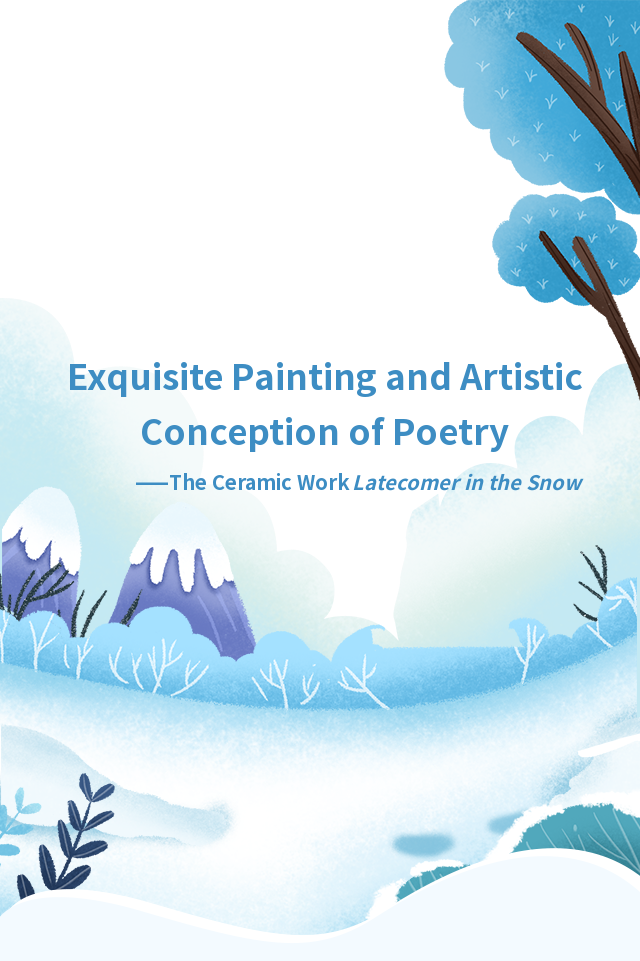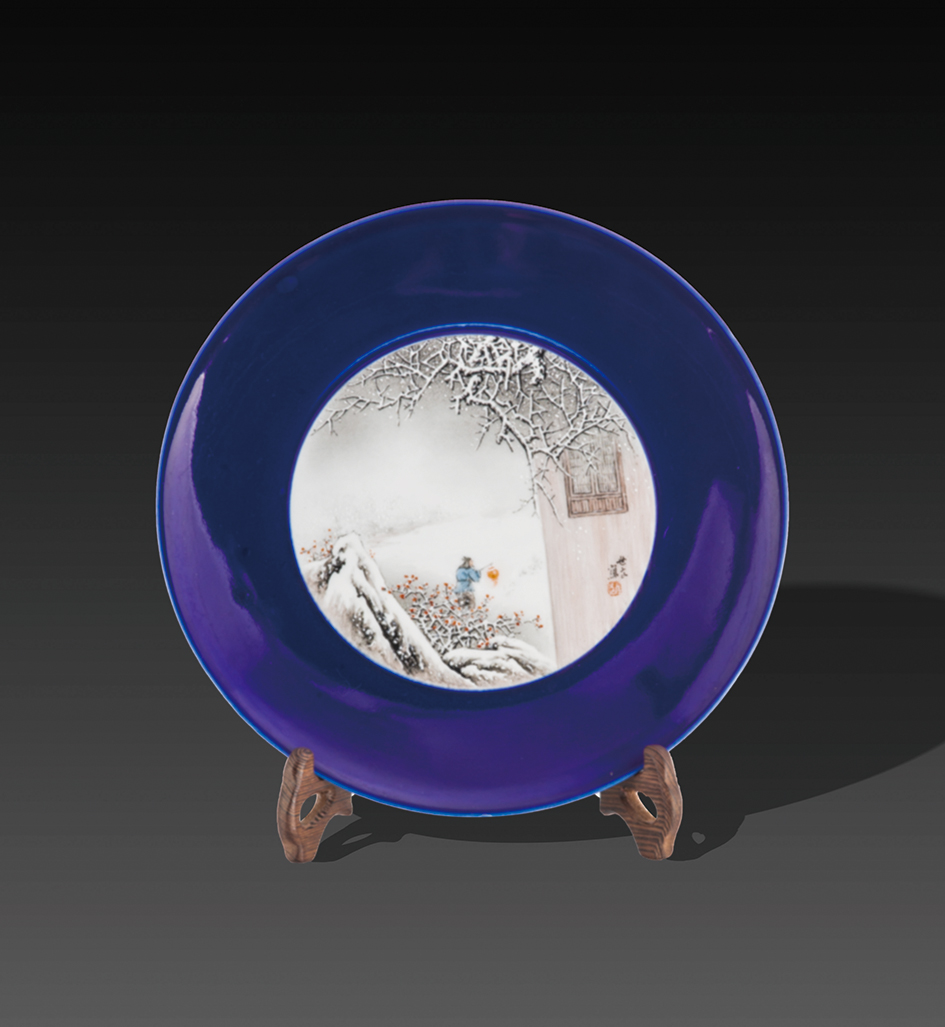

At dusk, it has been snowing for a whole day. Mountains in the distance seem boundless. Courtyards, houses and trees are all covered by snow. In freezing weather, there are few people, and lodges are empty. Suddenly, there is a dog barking sound. It turns out that the owner of the lodge has returned in the dark.
This is the image reflected by ceramic work Latecomer in the Snow, which is created by Chinese ceramist Zhao Shiwen in the 10th China Changchun International Ceramics Symposium in 2021.


The work is a circular decorative plate with a diameter of about 40.0 cm. As mentioned above, the picture shows the real scenes in which a man who left home to earn a living and returned on a snowy night in ancient China, expressing the author’s sympathy for people who lived a hard life in that era.
As we all know, the poet Liu Changqing of the Tang Dynasty has a well-known woo poem The Returning of Lodge Owner in Furong Mountain in the Snow, which tells the same story but in a different form of expression. The poem is as follows:
When the twilight falls on vast mountains, I feel that there is longer way to go. When weather gets colder, thatched cottages appear more lonely.
Suddenly there was a dog barking sound outside the wooden gate. It turned out that someone had braved the wind and snow to return home.
This short but inspirational poem has concise and easy-to-understand language and profound artistic conception. The poet used line-drawing techniques to describe the scenes of a lodger staying in the mountain on a snowy night and the lodger owner returning home. These scenes look like a set of images in a picture album. The time, season, location, environment, and after-snow scenes are all in this album, and all pictures are clear and well arranged. Although the poet’s emotion is not directly expressed, readers can intuitively understand it from the lines.
The poem The Returning of Lodge Owner in Furong Mountain in the Snow express pictures between the lines, while the ceramic work Latecomer in the Snow reflects a poem in the painting. The exquisite painting and the artistic conception of poetry are fully expressed in the latter work. In terms of artistic techniques, ceramist Zhao Shiwen adopts Chinese meticulous painting techniques and traditional craftsmanship of porcelain carving and colored glaze drawing. The picture is composed of convex and concave parts, achieving a three-dimensional effect. The characters, scenery, and utensils are delicately and vividly depicted, reproducing the real life of that era. The periphery of the work is decorated with a circle of gem blue glaze, which has primitive simplicity and elegance and sets off the center content. This creative technique is an innovative attempt to express the snow scenes in the North China.
As a Chinese ceramist, Zhao Shiwen has titles including a ceramic master of Jiangxi Province and senior arts and crafts master of Jiangxi Province. He has been engaged in ceramic creation for many years and is good at traditional porcelain painting with his innovations in expression techniques. He has participated ceramic exhibitions held in many places in China, e.g. Jingdezhen, Changchun, and has won awards.
